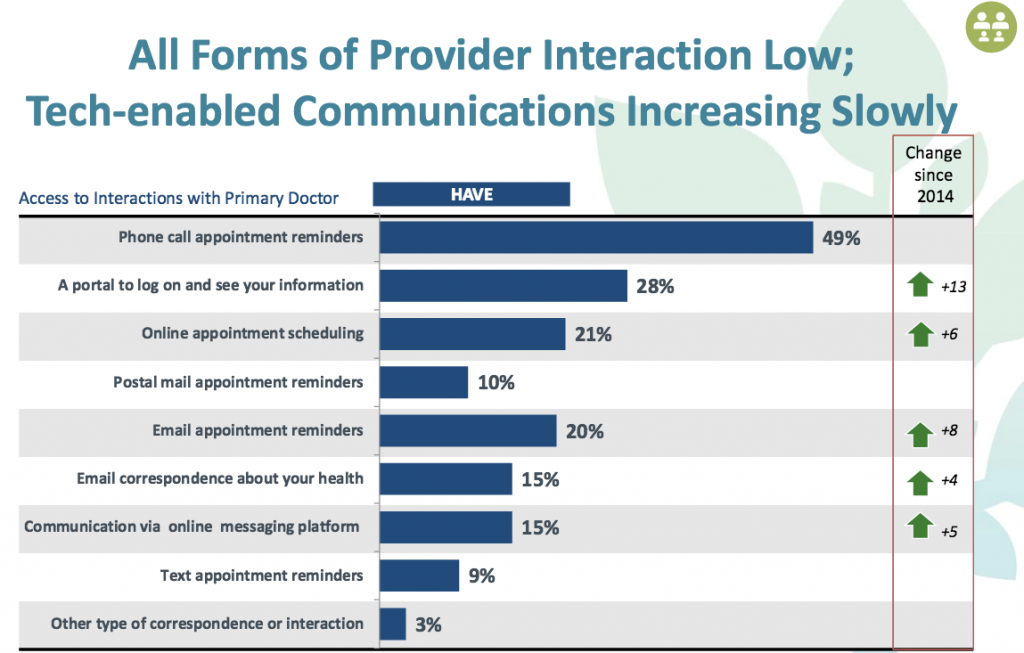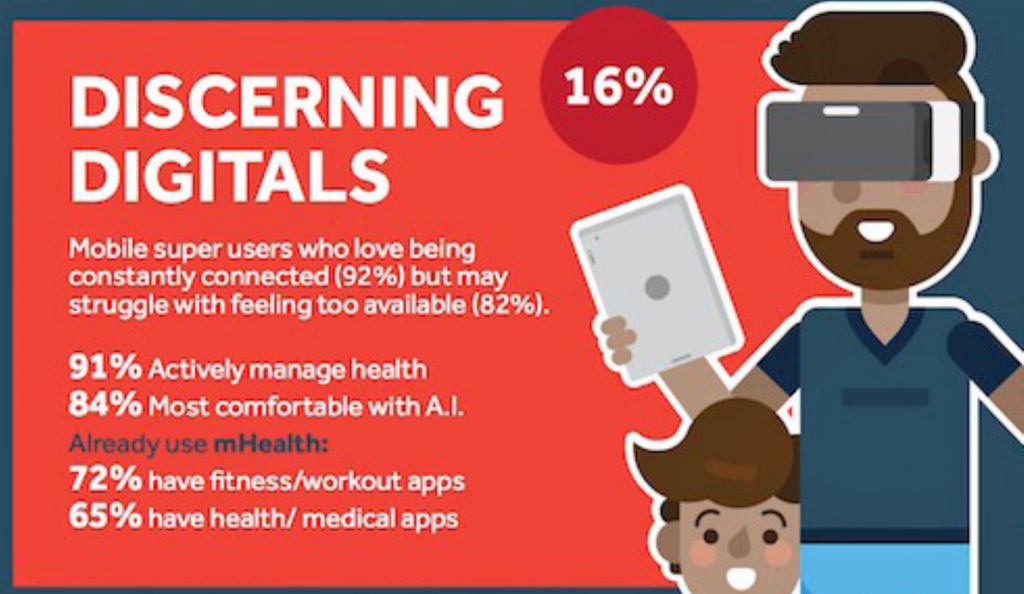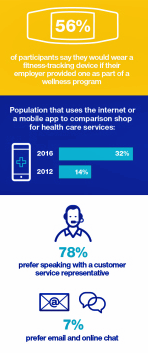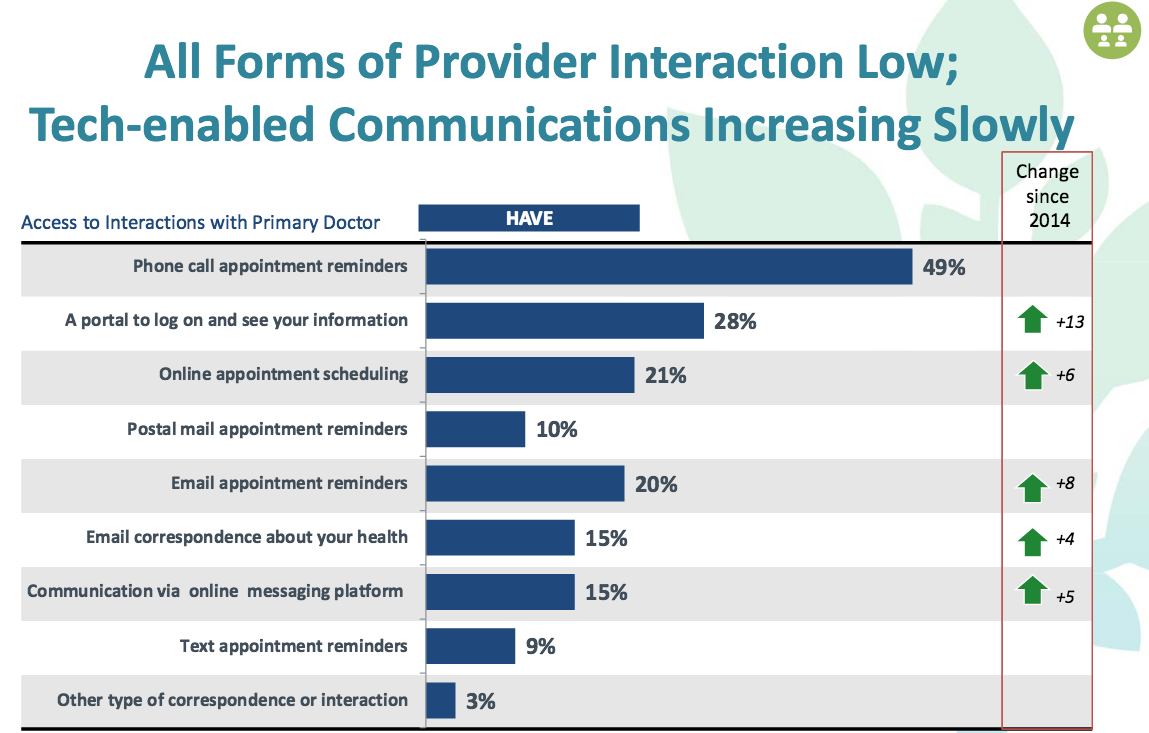This post was written to commemorate National Health IT Week, taking place 26-30 September 2016. This also coincides with the 10th annual meet-up of the Health 2.0 Conference, of which I’ve been a part since the group’s inception. My focus in both this post and at Health 2.0 is patient/person-powered healthcare, and how digital technologies can help people self-empower, be more health-informed, engage in health and healthcare, and better manage health finances and financial wellness.

Health consumers are more mobile and more connected than ever, PwC found: Americans’ mobile health adoption has doubled in two years, from 16% of consumers with at least one health app on their mobile devices in 2013 to 32% of people with mHealth app in 2015.
On the consumer demand side of healthcare, 60% of people are willing to have a video visit with a physician via a mobile platform, and 21% of people have already used a mobile device to refill a prescription, according to PwC.
The vanguard of digital health adopters are the Discerning Digitals, coined by Ketchum in their latest survey on the subject, the 2016 mHealth Monitor. Discerning Digitals comprise 16% of the US adult population, 91% of whom actively manage health, and 65% of whom have health and medical apps.
Looking beyond the most digitally health-engaged, overall, Ketchum found that 50% of people are interested in learning more about how mHealth can benefit their personal health.

On the providers’ side of the healthcare delivery equation (what I would call the “supply side”), patients’ access to tech-enabled communications is increasing…slowly, based on the Council of Accountable Physician Practices Better Together study on High Tech and High Touch (CAPP is a program of the American Medical Group Association). Data from the chart at the top comes from this study.
The plain old telephone system remains the most used communications technology between provider and patient. After that, electronic health records have penetrated most healthcare provider settings due to providers’ taking advantage of HITECH incentives for EHR adoption. On the upside, as more consumers have experienced the benefits of digital health records in their own providers’ offices, most patients (61%) say that the EHR allows “my doctor” to pull valuable information about my past health, according to Better Together. 77% of patients agreed that all physicians treating me should have access to information contained in my EHR.
As the first chart suggests, it’s clear that most doctors aren’t yet recommending technology tools to their patients: the highest ranking tool, email reminders, were recommended by only 11% of primary care physicians to their patients in 2015. Only 5% of PCPs recommended the use of a mobile app to track physical activity, and 3% recommended a wearable health monitor.
One of the most important benefits digital health tools can bring, when designed in the context of consumers’ life-flows, preferences, and values, is retail-style convenience, streamlining and time-saving. But even then, as more people continue to adopt digital tools for health/care, most (78%) say they still prefer to speak to a real person in real time for help on a specific issue or question according to UnitedHealthcare.

Health Populi’s Hot Points: Patients, morphing into health consumers, are concerned with both access to quality health care services, and their costs. In no other nation in the world do patients concern themselves more with personal healthcare costs than in America.
About one-third of US health consumers have used the Internet or mobile apps to comparison shop for healthcare treatments and services, according to the latest UnitedHealthcare Consumer Sentiment Survey. Compare that 32% of people healthcare comparison-shopping to 49% of people who compare prices when buying media (books, CDs, video games), 45% for purchasing airline tickets, and 44% for shopping for consumer electronics.
While 1 in 3 people doing healthcare shopping sounds like a lagging indicator compared with these other comparison shopping categories, the percentage of people health care shopping in America has grown 230% since 2012, when 14% of people used the Internet or mobile tools to comparison shop for health services (per the UnitedHealthcare 2012 consumer survey).
American consumers are at a unique moment in US health care: faced with growing costs, more decision making responsibility for their health care, and seemingly unlimited data and information at their digital fingertips on smartphones (now, the prevailing platform for accessing the Internet for most consumers — and especially among lower-income and rural householders).
We see in the UnitedHealthcare data that more consumers are now comparison shopping online for healthcare than for cars: a new data threshold for healthcare consumerism. American patients, now healthcare consumers, are working harder to cross the chasm of digital health toward their healthcare providers, who are moving slowly toward digital health operations in their practices based on the Better Together findings.
But health consumers are also finding ease and convenience connecting with retail health choices: in clinics where telehealth is increasingly offered (say with CVS/health which affiliates with American Well, Doctor on Demand, and Teladoc), via mobile platforms for doctor-finding and appointment-making (like ZocDoc and Vitals), and participating in patient social networks via PatientsLikeMe and WEGO Health.
 UHC also points out that most health consumers are looking for a human touch to respond to each person’s unique healthcare queries. Remember that US consumers rank the ethics and honesty of their nurses, pharmacists and doctors more than any other professions. Hospitals and health providers can leverage that human love-touch coupled with digital health care tools. Patients, now consumers, are reaching out to do so.
UHC also points out that most health consumers are looking for a human touch to respond to each person’s unique healthcare queries. Remember that US consumers rank the ethics and honesty of their nurses, pharmacists and doctors more than any other professions. Hospitals and health providers can leverage that human love-touch coupled with digital health care tools. Patients, now consumers, are reaching out to do so.





 Thank you FeedSpot for
Thank you FeedSpot for